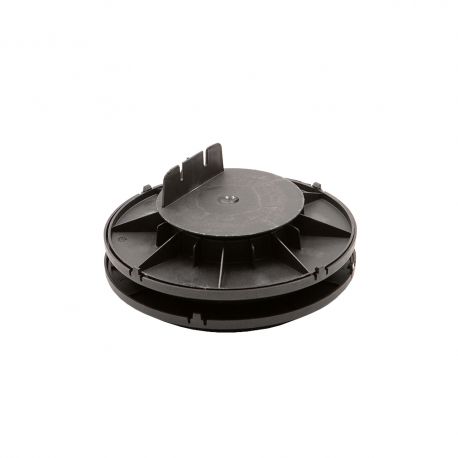

Get 5% off your next order by signing up.




50/65 mm self-leveling pedestal for wooden and composite decks. Usefulness: allows you to create or compensate for a slope or uneven terrain up to 5% over 1 meter. The pedestal is self-leveling from below: its saucer-shaped base allows the covering to be leveled. Adjustable in height from 50 to 65 mm using the adjustment ring located under the head of the pedestal. Supported load: more than one ton. Made in France, the guarantee lasts 10 years.
Expédition des commandes en 24/48h
Livraison offerte dès 500€
Paiement en 3 ou 4x avec Oney
Service client du lundi au vendredi
Reference: SPA-0537000500603

Reference: SPA-1197000500403

Reference: SPA-1197000500603

Reference: SPA-1197000500503

Reference: SPA-1197000500703

Reference: SPA-1197000500803

Reference: SPA-0538000600603

Reference: SPA-0537900500503

Reference: SPA-0537900500603

Reference: SPA-4009409873002

Reference: SCH-9047250 70/42


The YEED self-leveling wooden terrace pedestal is adjustable from 50 to 65 mm. Its self-leveling disc located at its base makes it possible to create or compensate for a slope of up to 5% over one meter. This joist support is used to create the foundations of a wooden or composite deck on uneven, irregular or a vertical drop ground. Its attractive price, quality and features make it an essential terrace pedestal for all DIY enthusiasts, whether individuals or professionals.
It all starts with making a sketch of your terrace: location, shape and dimensions must be represented on your layout plan. Why ? Quite simply to calculate the number of terrace pedestals, the number of joists, wooden boards and even the number of screws. This will allow you to plan ahead and prepare your site well.
The self-leveling pedestal allows you to lay your terrace on sloping or uneven ground. Its self-leveling disc will catch up or compensate for the irregularities of the ground. However, this does not exclude upstream preparation of the ground. Yes, laying on crushed gravel is ideal for a self-leveling plot because it is never perfectly flat.
Few tools are necessary for this preparation, here is the proof:
In order to protect your wooden terrace from issues related to climatic conditions such as drought or bad weather, and to prevent your wooden terrace from moving over time, stabilize your soil as follows:
Laying a wooden deck on pedestals is relatively simple, especially with self-leveling pedestals that make your job easier. You'll need a weekend to create your wooden or composite terrace.
Some accessories are essential for the successful installation of a wooden terrace on pedestals, here they are:
To carry out this step easily, draw a line every 50 cm using your chalk line to define the location of the joists. The latter must be supported every 70 cm along their length.
Once your joist supports are installed on the ground, adjust the height of the self-leveling studs. Do not forget to leave a slight slope of 1.5% to promote the evacuation of rainwater.
Essential point on the joists: they must be of the same vartiety as your coating. Thus, resinous wood for pine slats and joists, exotic wood for the coating as well as for its foundations... If you want more solidity, you can opt for aluminum joists.
To perfect your wooden terrace on pedestals, follow these 3 small steps to carry out the side dressing of the latter.
Data sheet
Reference: JOU-IH040060LS10000

Reference: PRO-SUPAL-SUPAW

Reference: PRO-SUPAS-SUPAW

Reference: JOU-IH080140LS10000


50/65 mm self-leveling pedestal for wooden and composite decks. Usefulness: allows you to create or compensate for a slope or uneven terrain up to 5% over 1 meter. The pedestal is self-leveling from below: its saucer-shaped base allows the covering to be leveled. Adjustable in height from 50 to 65 mm using the adjustment ring located under the head of the pedestal. Supported load: more than one ton. Made in France, the guarantee lasts 10 years.
check_circle
check_circle